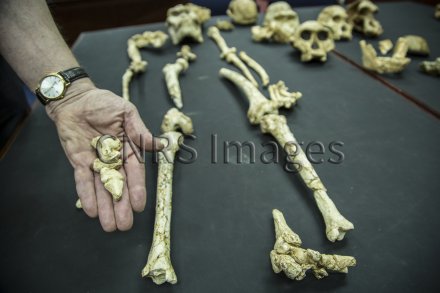Production year
2018

© Pierre DE PARSCAU / USR3336 / CNRS Images
20190001_0017
Premiers ossements découverts de "Little Foot" (StW 573). En 1994, en triant une boîte de fossiles d’animaux exhumés en 1992 d’une grotte de Sterkfontein en Afrique du Sud, le paléoanthropologue Ronald J. Clarke identifie quelques os du pied gauche d’un hominidé. Lui est ainsi donné le nom de "Little Foot". A l'arrière-plan, le reste du fossile retrouvé sur le site et ensuite totalement dégagé a permis de reconstituer le squelette d'un Australopithèque de sexe féminin le plus complet (95%) et l’un des plus anciens (3,67 millions d'années) jamais découverts. L’étude de son squelette, dont certains os sont encore en connexion anatomique, fournit un éclairage inestimable sur les origines des premiers hominines. Il est aujourd’hui conservé à l’université du Witwatersrand à Johannesburg.
The use of media visible on the CNRS Images Platform can be granted on request. Any reproduction or representation is forbidden without prior authorization from CNRS Images (except for resources under Creative Commons license).
No modification of an image may be made without the prior consent of CNRS Images.
No use of an image for advertising purposes or distribution to a third party may be made without the prior agreement of CNRS Images.
For more information, please consult our general conditions
2018
Our work is guided by the way scientists question the world around them and we translate their research into images to help people to understand the world better and to awaken their curiosity and wonderment.